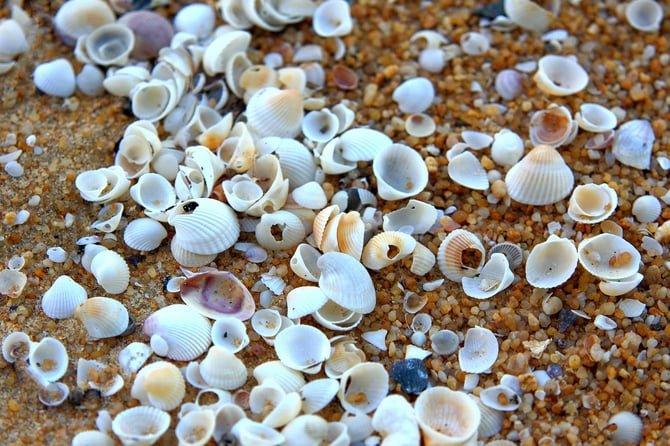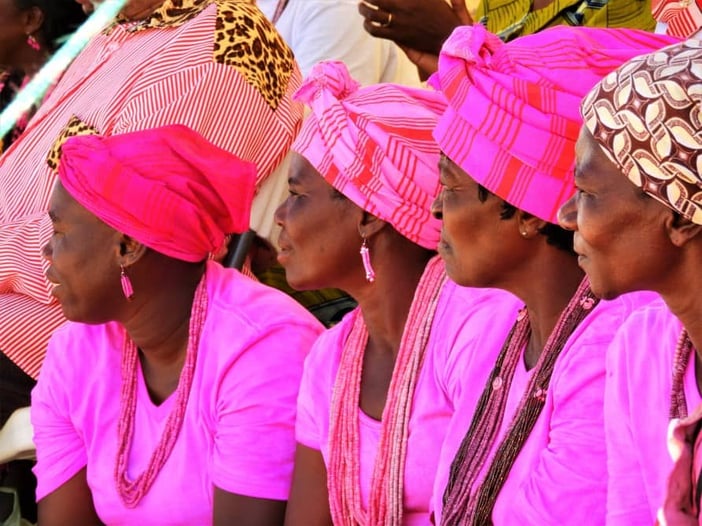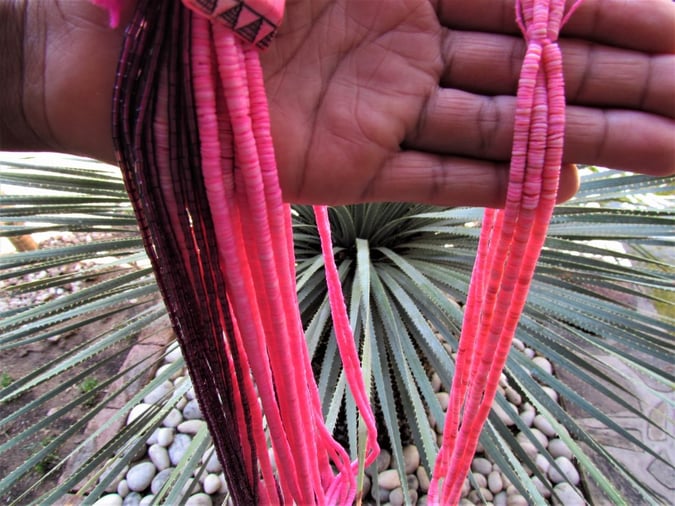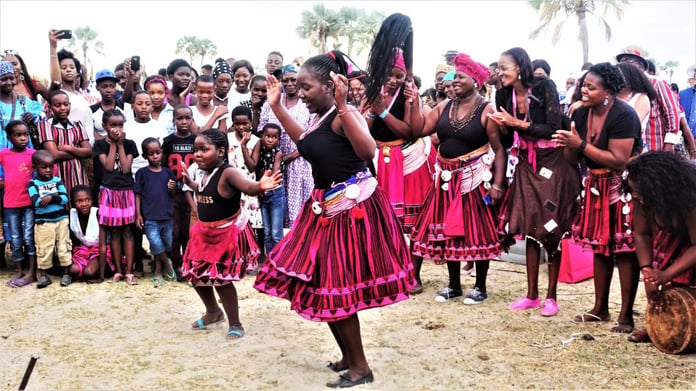The onyoka is a unique piece of jewellery made from mussel shells and it is often seen decked stunningly around most aawambo women’s necklines during joyous occasions or even as they run errands in northern Namibia. This necklace is worn to perfectly match their exquisite traditional pink dresses or skirts.
How is it produced?
The onyoka is made from washed up white mussel shell fragments that women collect on the beaches of Henties Bay, Swakopmund and Walvis Bay. This process often involves walking for long stretches of time, searching for suitable mussels.
 Rights to app.picdefense.io | Stock Image
Rights to app.picdefense.io | Stock Image
Once enough mussels have been collected, the shells are evenly rested on a large sack to dry in the sun. Soon after the drying, the white centre section is removed with scissors and smaller squares of shell fragments are cautiously cut out as to avoid any damage to the brittle shells. These little fragments are then soaked in water to soften them. Once this has been achieved, holes are meticulously drilled into each centre with a hand drill. All edges are then smoothed with a grinder and then laced individually with a needle on a string of wool to form a complete necklace.
This necklace is finally dipped into pink dye to match that stylish aawambo traditional dress you have been meaning to purchase at the Ondjaba Art Shop. But, if you wish to have the necklace in white, some are left in their natural white colour.
Where can I purchase this jewellery?
The onyoka necklace is widely available throughout the country, notably at craft markets or open markets. So, if you are travelling through Namibia from your Zambezi Experience, be on the lookout for those quirky markets or vendors. The Namibia Craft Market in Windhoek is also worth browsing through.
Should I wear it dyed?
It definitely depends on that which you prefer. The pink dye is linked to the traditional attire of the aawambo communities and the white signifies the mussel shell fragments’ natural colour, which is just as gorgeous. Wear it as you see fit!
How many strings does it need to have?
The number of strings worn usually depends on you, however in the aawambo tradition is signifies age and affluence. Hence, the elder women will often wear this necklace with more strings and the younger with less.
When is it appropriate to wear?
It is usually worn by women during celebratory occasions, such as weddings, naming of babies, christening, birthdays or other events. A new baby in the family is often welcomed with a gift of a string or two of this necklace. But, you are sure to see women adorned with this necklace as they make their way to work or shops, as it is an exquisite piece of jewellery.
So, remember to gift a friend or cousin with this gorgeous necklace when exploring the breathtaking corners of Namibia.
Where else can you purchase this necklace in Namibia? If you have this distinctive necklace please share a photo with us in the comment section below.
Author – I’m Nela, from Windhoek Namibia but born in a small village called Omatunda in northern Namibia. I am passionate about writing, research and photography, as it helps me gain knowledge about people and my country.







SUBMIT YOUR COMMENT